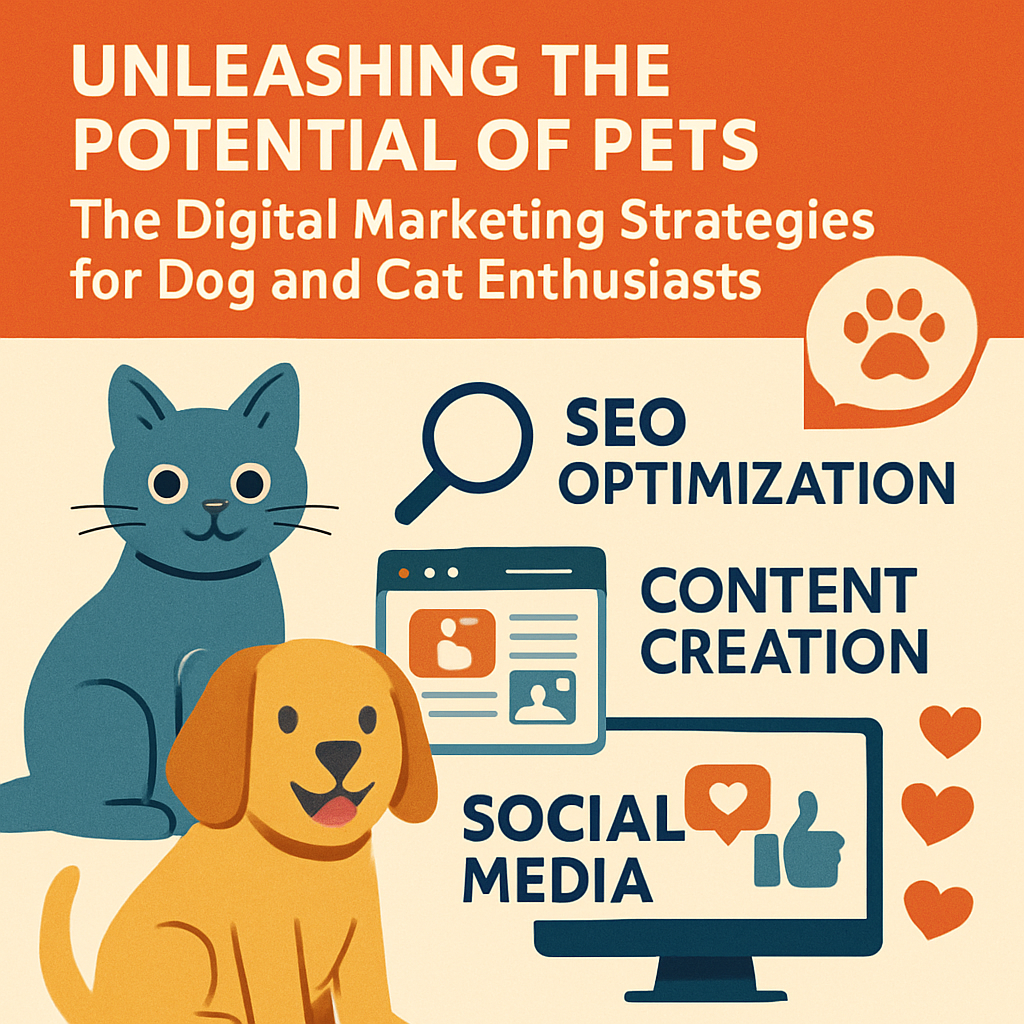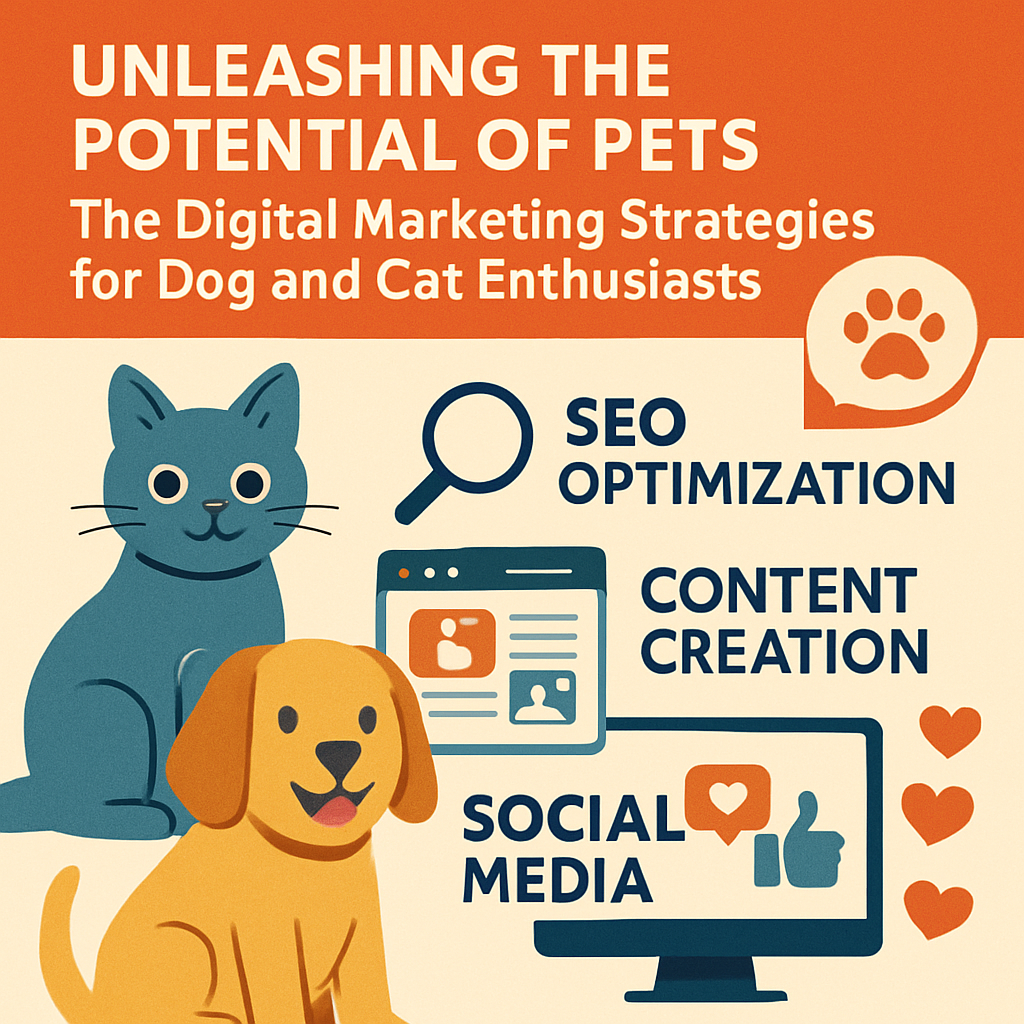The Purr-fect Plan for Marketing Pet Products and Services
When it comes to reaching the hearts and minds of pet owners, especially those passionate about dogs and cats, brands must adopt an impactful digital marketing strategy. This task, while seemingly straightforward, involves leveraging SEO optimization, targeted content, and a robust social media presence to build authority in the pet industry.

Embracing SEO for the Pet Niche
Search Engine Optimization (SEO) is critical for any pet-related business aiming to enhance its online visibility. By focusing on primary keywords like “dog” and “cat,” businesses can capture the interest of enthusiastic pet parents.
The Power of Keywords: Why Dogs and Cats Matter
Choosing relevant keywords is an art and a science. Incorporate keywords like “dog care tips” or “cat grooming guide” naturally within content to spark interest and improve search rankings. According to a recent study, content with targeted keywords can increase website traffic by up to 30% [source: Forbes].
Developing Engaging Content that Caters to Pet Lovers
Content should not only inform but also engage the target audience. Whether it’s guides on “how to train your dog” or listicles like “Top 10 Cat Toys,” the content must resonate with pet owners.
Building Trust Through Authority: Educational Content
Providing educational content helps establish trust and authority within the pet community. Develop comprehensive guides on topics such as “practical dog training techniques” or “essential cat health tips.” This not only aids SEO but also establishes your brand as a credible resource. Resources like the American Veterinary Medical Association can provide authoritative information that can be linked externally to enrich your content.
Leverage Social Media to Fetch New Followers
Engage and Interact: The Role of Social Media in Pet Marketing
Using platforms such as Instagram and Facebook is an effective strategy for pet businesses. Visual content, including pet images and videos, captures the attention of pet lovers and prompts interaction.
Harnessing Hashtags and Influencers
Utilize pet-specific hashtags (#DogLife, #CatLovers) to enhance your social media reach. Additionally, collaborate with pet influencers who have substantial followings. This not only builds trust but also broadens your reach to a new audience base.
Fostering a Community of Pet Enthusiasts
By integrating digital marketing strategies effectively, businesses can nurture a community of loyal customers. Interactive elements such as forums or blogs allow pet owners to share experiences, thereby boosting engagement.
Engage Your Community with Interactive Content
Create blogs that answer common questions like, “What’s the best diet for dogs?” or “How to solve common cat behavioral problems?” This strategy encourages reader interaction and promotes internal linking to other relevant blog posts, enhancing site navigation and retention.
Encouraging User Interaction with Authentic Content
Finally, authenticity plays a crucial role in digital marketing. Avoid keyword stuffing and focus on natural language that resonates with pet owners. Encourage feedback and reviews to foster a supportive community.
In conclusion, by adeptly integrating SEO strategies, authentic content, and effective social media marketing, businesses can position themselves as authoritative and trustworthy sources for dog and cat enthusiasts. This cohesive approach not only attracts potential customers but also retains them by building lasting trust.
Internal Resource
- For more insights on pet care, visit our comprehensive Dog and Cat Care Blog.
External Resource
- To learn more about the importance of pet healthcare, explore the American Veterinary Medical Association.
By aligning your digital marketing strategy with these insights, your brand will not only capture the attention of pet lovers but also establish a firm standing in the pet industry.

